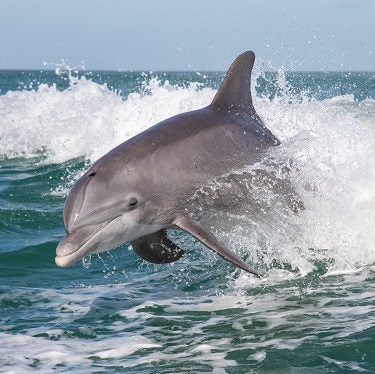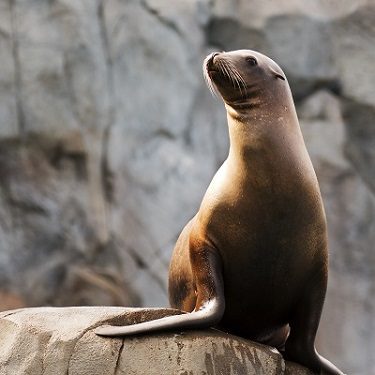Marine Life Encyclopedia
Corals and Other Invertebrates
Moon Jelly
Aurelia aurita
Distribution
Tropical to temperate latitudes of the north Atlantic Ocean
eCOSYSTEM/HABITAT
Coastal to oceanic (pelagic)
FEEDING HABITS
Foraging predator
TAXONOMY
Class Scyphozoa (true jellies), Family Ulmaridae (jellies)
Though the moon jelly lives throughout the epipelagic zone, it is most commonly found near the coast and in upwelling areas, where its prey occurs in higher concentrations. This species is not a very strong swimmer, so they are often found on beaches after strong storms or tides that push them onshore. Along with other jellies, moon jellies are the favorite prey of some open ocean predators, like the ocean sunfish and the leatherback turtle. They have very little nutritional value, however, so the predators that specialize on them must eat hundreds and hundreds of these jellies in order to maintain their required energy levels.
Like many jellies, moon jellies have an interesting life cycle that includes a combination of sexual and asexual reproduction. Sexually mature moon jellies are the animals we see swimming around the open ocean (known as medusae), with which we are most familiar. The distinct horseshoe-shaped structures at the top of the medusa’s bell are the gonads. These adults reproduce via external fertilization, where females release eggs and males release sperm into the water column. Once the egg is fertilized, a larva hatches and lives in the pelagic environment for some time. As it grows, the larva searches for a suitable place in shallow water and eventually attaches to the sea floor where it grows into an upside down medusa known as a polyp. During the polyp phase, an individual asexually buds off several clones of itself that swim away as medusae and eventually grow into sexually mature moon jellies. This alternation of sexual and asexual reproduction may be a means of quickly increasing numbers while preserving the importance of mixing genes with other individuals.
Scientists believe that moon jellies and other jellies thrive in areas that are particularly affected by human activity. Overfishing, ocean warming, and pollution are all factors that reduce moon jellies’ predators and competitors and increase their prey. These results provide a more favorable environment for this species. As people continue to increase our ocean activities, the Moon Jelly may become one of the more successful species in the open ocean.
Engage Youth with Sailors for the Sea
Oceana joined forces with Sailors for the Sea, an ocean conservation organization dedicated to educating and engaging the world’s boating community. Sailors for the Sea developed the KELP (Kids Environmental Lesson Plans) program to create the next generation of ocean stewards. Click here or below to download hands-on marine science activities for kids.
Get Involved

Donate Today
SUPPORT OUR WORK TO PROTECT THE OCEANS BY GIVING TODAY
With the support of more than 1 million activists like you, we have already protected nearly 4 million square miles of ocean.

TAKE ACTION NOW
Support policy change for the oceans
Decision-makers need to hear from ocean lovers like you. Make your voice heard!

VISIT OUR ADOPTION CENTER
SYMBOLICALLY ADOPT AN ANIMAL TODAY
Visit our online store to see all the ocean animals you can symbolically adopt, either for yourself or as a gift for someone else.

DOWNLOAD OCEAN ACTIVITIES
HELP KIDS DISCOVER OUR BLUE PLANET
Our free KELP (Kids Environmental Lesson Plans) empower children to learn about and protect our oceans!




